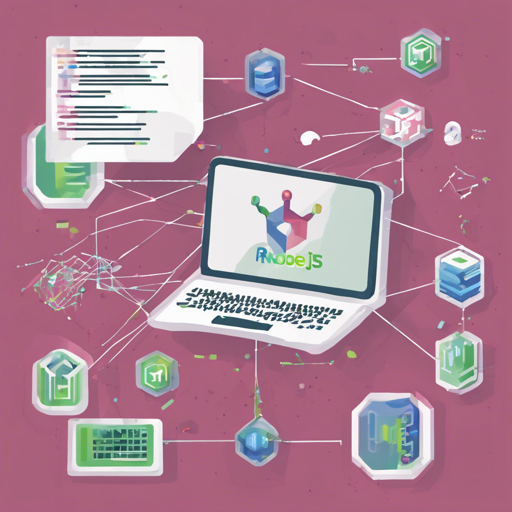In today’s tech-savvy world, the ability to communicate between clients and servers is vital, and RESTful APIs have become the backbone of this interaction. In this tutorial, we will walk through the steps to set up a bare-bones RESTful API using Node.js, with MongoDB as our database. Our primary focus will be on a User model and controller, detailing how to create, read, update, and delete user data seamlessly.
Understanding the Components
Before diving into the code, let’s break down the components we will use:
- User Model: This defines the structure of the data we want to store.
- Controller: This contains all the business logic needed to interact with the database.
- DB File: This file connects the application to the MongoDB database.
- App File: This serves to bootstrap the application, setting up necessary configurations.
- Server File: This file spins up the server and listens on a specific port.
Setting Up the Project
Let’s start by initializing our Node.js project:
npm init -yThis command creates a package.json file that will manage our dependencies. Now, let’s install the necessary packages:
npm install express mongoose body-parserCoding the API
Now that we have the basic setup, let’s create the different files we need.
Creating the User Model
Imagine the User Model as a blueprint for a house; it outlines what a house should have (rooms, doors, etc.). Likewise, our model will specify the attributes of a user:
const mongoose = require('mongoose');
const userSchema = new mongoose.Schema({
name: {
type: String,
required: true
},
email: {
type: String,
required: true,
unique: true
},
password: {
type: String,
required: true
}
});
module.exports = mongoose.model('User', userSchema);
This script defines the user’s properties (name, email, and password) and enforces certain rules, much like a building code does for construction.
Creating the Controller
The controller is the pilot of our API, steering data between the database and the client:
const User = require('./userModel');
exports.createUser = async (req, res) => {
try {
const user = new User(req.body);
await user.save();
res.status(201).send(user);
} catch (err) {
res.status(400).send(err);
}
};
// Other CRUD operations would go similarly
This function ensures that when a new user is created, the data is saved to the database, akin to handing the keys over after a house sale.
Database Connection
Next, we need a way for our application to connect to the MongoDB database. The database acts like a storage unit for all our user blueprints:
const mongoose = require('mongoose');
mongoose.connect('mongodb://localhost:27017/userDB', {
useNewUrlParser: true,
useUnifiedTopology: true
}).then(() => console.log('MongoDB connected'))
.catch(err => console.log(err));
Bootstrapping the Application
Now we will also set up our app to utilize these components:
const express = require('express');
const bodyParser = require('body-parser');
const app = express();
const mongoose = require('./db'); // Assume db.js as our DB connection file
const userController = require('./userController');
app.use(bodyParser.json());
app.post('/users', userController.createUser);
// Define other routes here...
app.listen(3000, () => {
console.log('Server is running on port 3000');
});
With this foundation, we’ve set up our application to respond on a specific port and are ready to handle requests!
Troubleshooting Tips
If you encounter any issues during setup, consider these troubleshooting steps:
- Ensure that MongoDB is running on your local machine.
- Double-check your database connection string.
- Examine your model and controller for typos or syntax errors.
- Use debugging tools like Node.js Debugger to trace issues.
For more insights, updates, or to collaborate on AI development projects, stay connected with fxis.ai.
Final Thoughts
With these steps, you have successfully set up a RESTful API using Node.js and MongoDB. This is just the beginning, as you can expand on this foundation to create more robust applications.
At fxis.ai, we believe that such advancements are crucial for the future of AI, as they enable more comprehensive and effective solutions. Our team is continually exploring new methodologies to push the envelope in artificial intelligence, ensuring that our clients benefit from the latest technological innovations.

